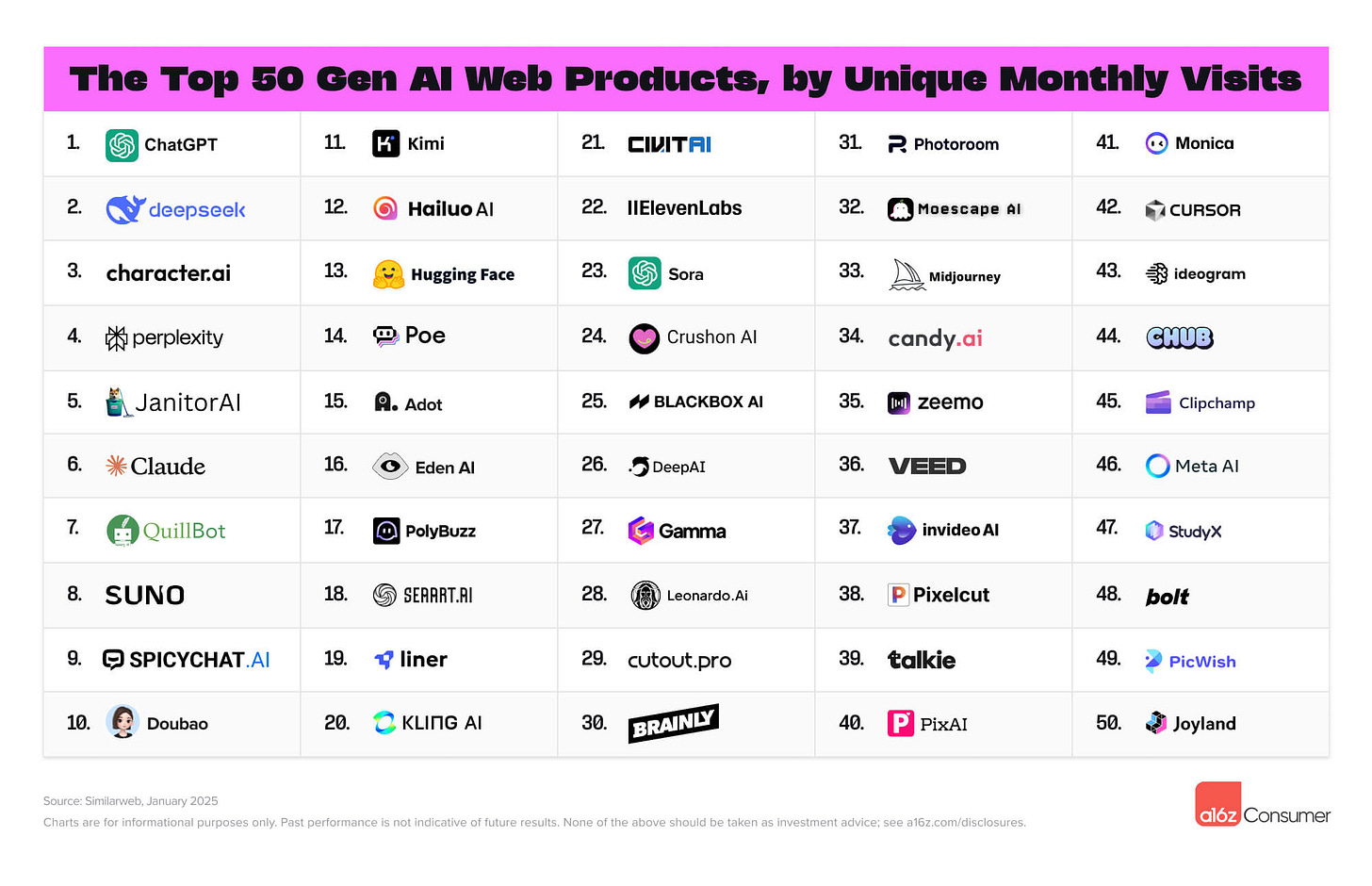50 Most Popular GenAI Apps: Explained
What tools are top of the line right now?
AI is growing so fast that anyone could get confused. One month's experimental toy can become next month's must-have tool. Frankly speaking, even we find it hard to keep track of all the most important updates (although we check for them every day).
But the other day, I came across a good list of the 50 most in-demand AI tools, and now I want to discuss it with you. And why don't we do it from the perspective of creators and entrepreneurs?
Today, we break down what’s hot, what’s working, and where opportunities lie in the AI world. Let’s get started.
Get 20% OFF Full Access subscription!
What Do Users Want from AI?
I'm talking about the 50 most used GenAI web apps compiled by the a16z investment fund. This is one of the largest venture capital firms paying significant attention to AI over the last few years. And, happily, it's doing so in a handy format.
These top 50 AI apps come from analyzing web traffic and usage patterns in late 2024 and early 2025. Essentially, these are the AI-first tools that internet users visit most.
Notably, the list excludes older platforms like Canva or Notion that only added AI features. The focus here is on AI-native services.
Let's quickly review the changes over the last six months.
Trends in Consumer AI Apps
The past year saw major shifts: 17 new companies joined the top ranks since the previous report. This churn shows how quickly the GenAI space is evolving.
One more big change is the rise of brand-new AI assistants.
DeepSeek rocketed from obscurity to become the #2 most-used AI product virtually overnight, overtaking last year’s darling, Character.AI. Meanwhile, many creative tools now dominate the rankings. People are flocking to AI image generators, design helpers, and video creators in huge numbers.
AI-powered visual apps (for generating and editing images/videos) have especially grown, reflecting how much creators want these capabilities.
Another trend is the growing presence of AI tools for developers and “no-code” builders. A year ago, creators mostly used GenAI for text or art; now, we see apps gaining traction by helping people build software without a programming background.
In short, user interest is expanding from simple chatbots to more specialized and creative applications. Now, we can get to an overview of the tools.
Keep reading with a 7-day free trial
Subscribe to Creators' AI to keep reading this post and get 7 days of free access to the full post archives.


